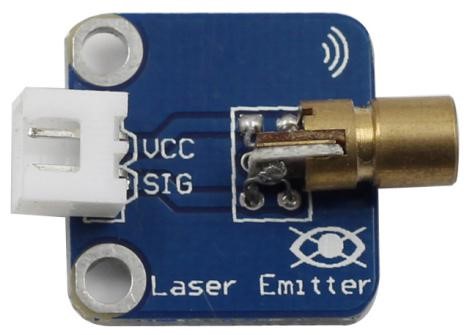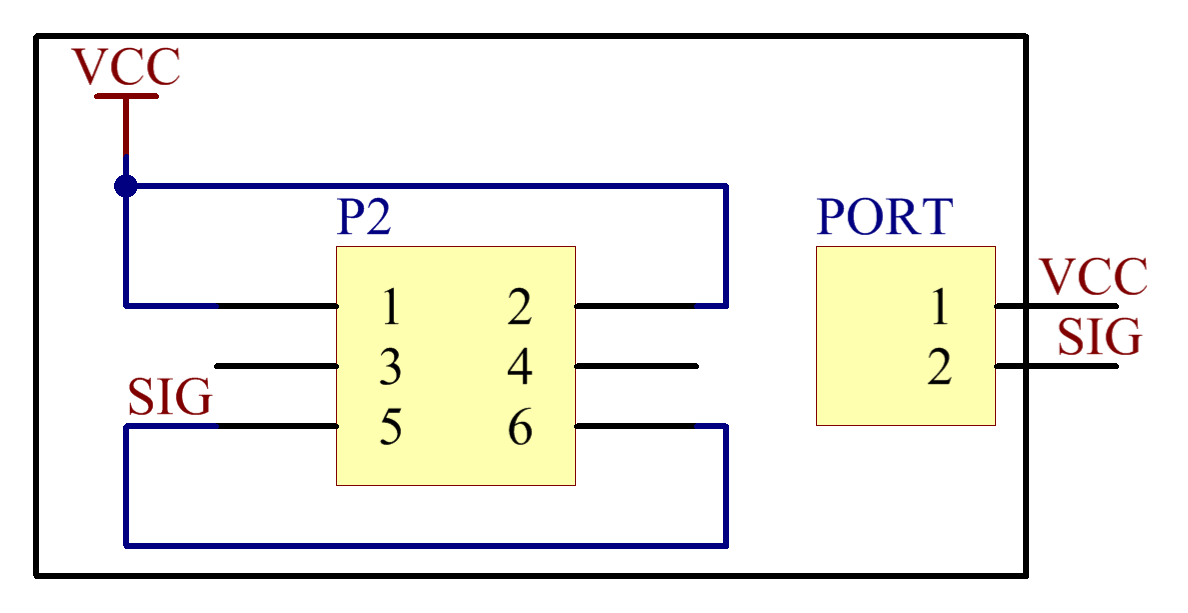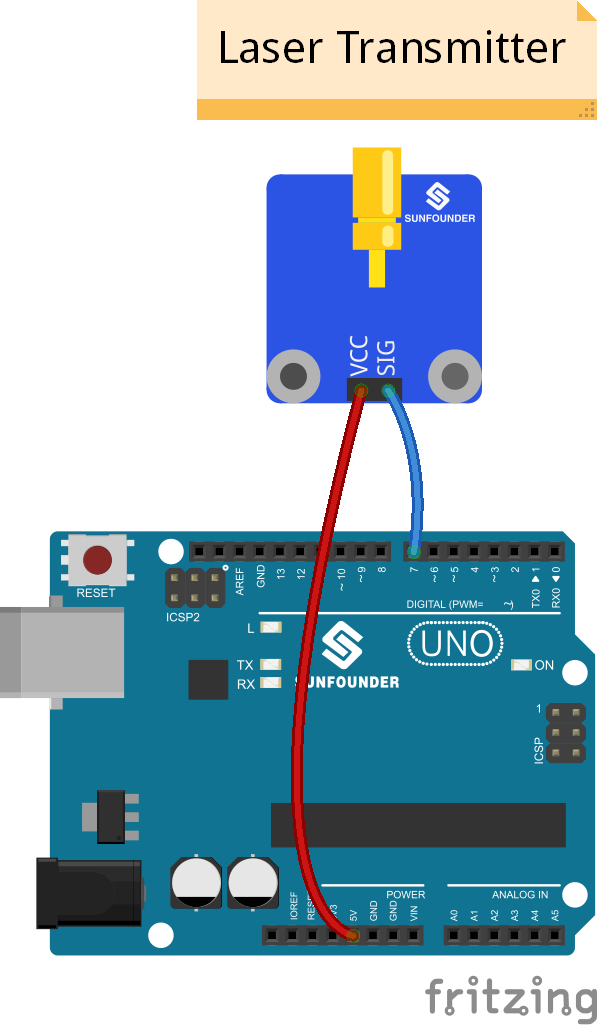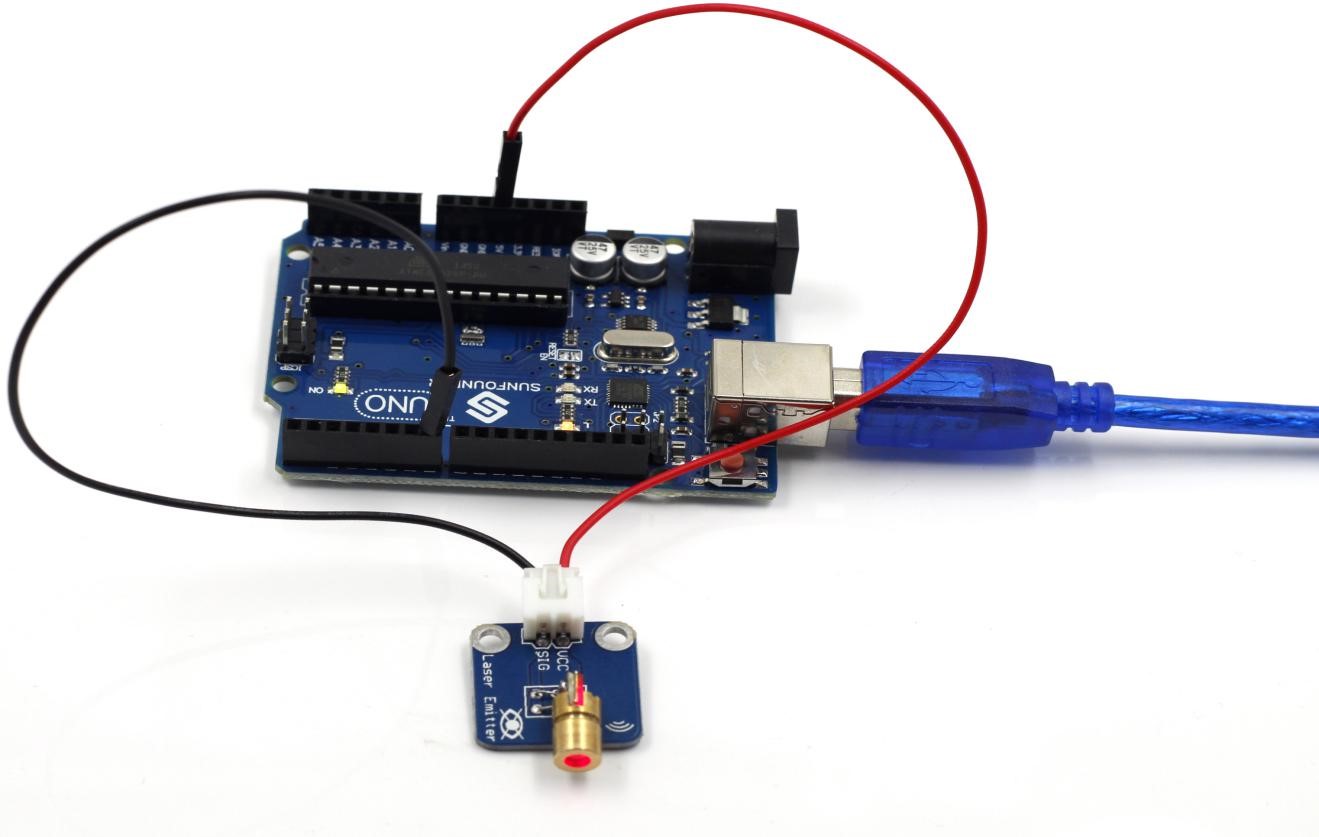Introduction
Laser is widely used in medical treatment, military, and other fields due to its good directivity and energy concentration. The Laser Transmitter module, as the name suggests, is a one that can emit laser.

Components
– 1 * SunFounder Uno board
– 1 * USB data cable
– 1 * Laser transmitter module
– 1 * 2-Pin anti-reverse cable
Experimental Principle
A laser is a device that emits light through a process of optical amplification based on the stimulated emission of electromagnetic radiation. Lasers differ from other sources of light because they emit light coherently.
Spatial coherence allows a laser to be focused to a tight spot, enabling applications like laser cutting and lithography, and a laser beam to stay narrow over long distances (collimation), enabling applications such as laser pointer. Lasers can also have high temporal coherence which allows them to have a very narrow spectrum, i.e., they only emit light of a single color. And its temporal coherence can be used to produce pulses of light—as short as a femtosecond.

Experimental Procedures
Step 1: Build the circuit

Step 2: Program (Please refer to the example code in LEARN -> Get Tutorial on our website)
Note: Here you need to add a library. Refer to the description in Lesson 1 previously in the manual.
Step 3: Compile
Step 4: Upload the sketch to SunFounder Uno board
Now, you can see the Laser Transmitter module send out Morse signals.

Note: DO NOT look directly at the laser head. It can cause great harm to your eyes.
Code
See the corresponding code in the package Sensor_Kit_V2.0_for_Arduino.zip
